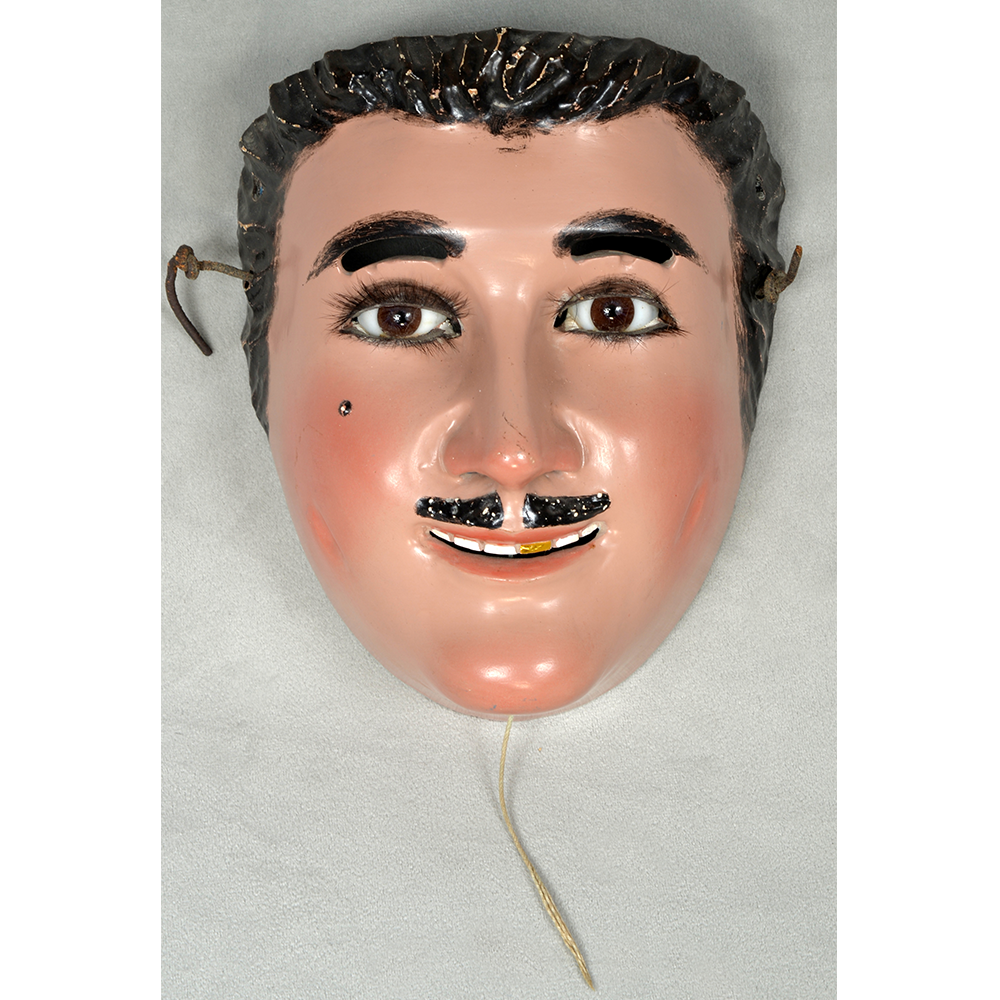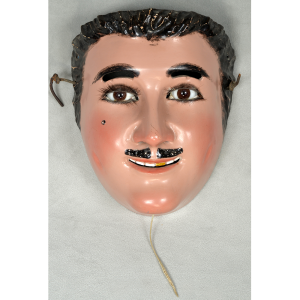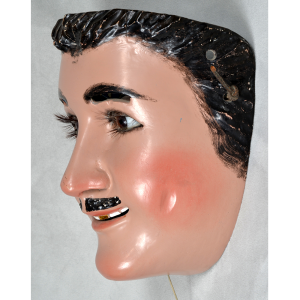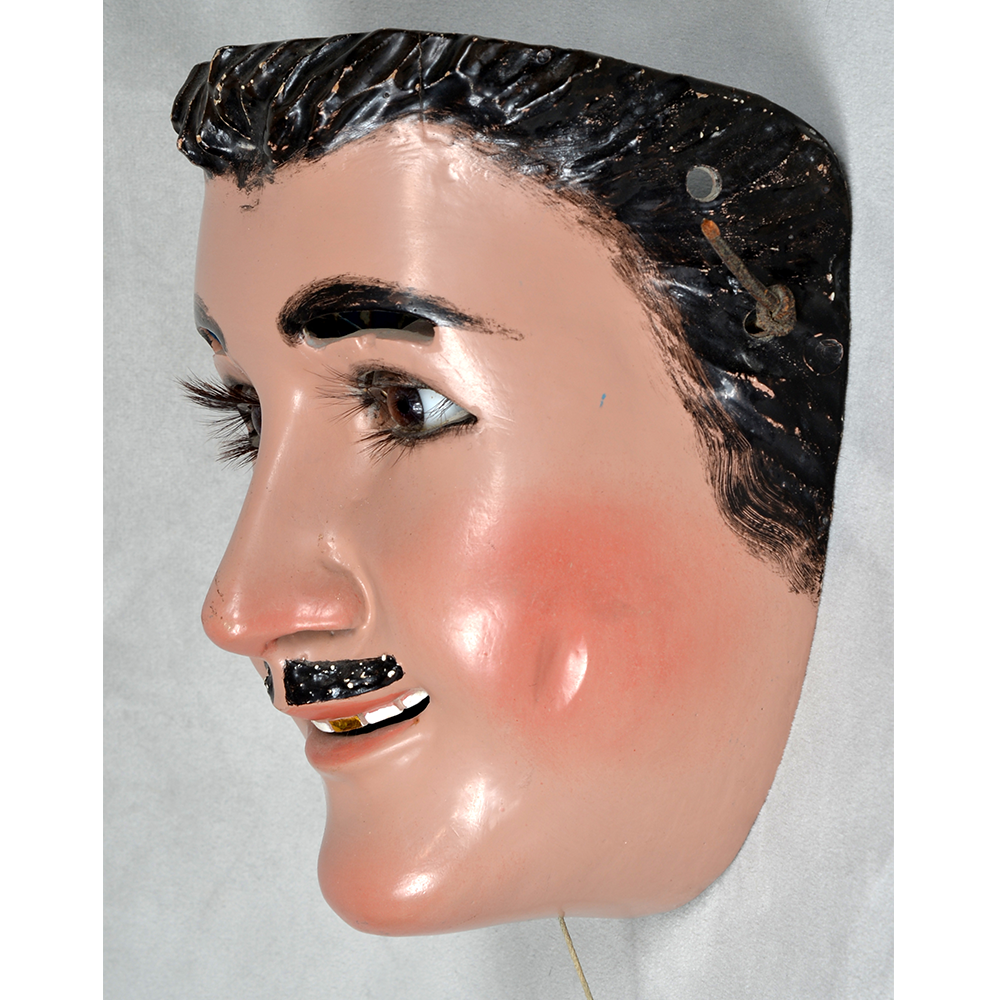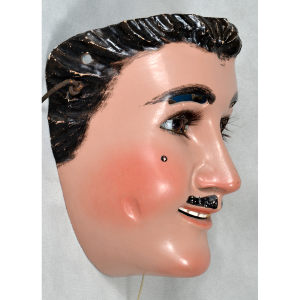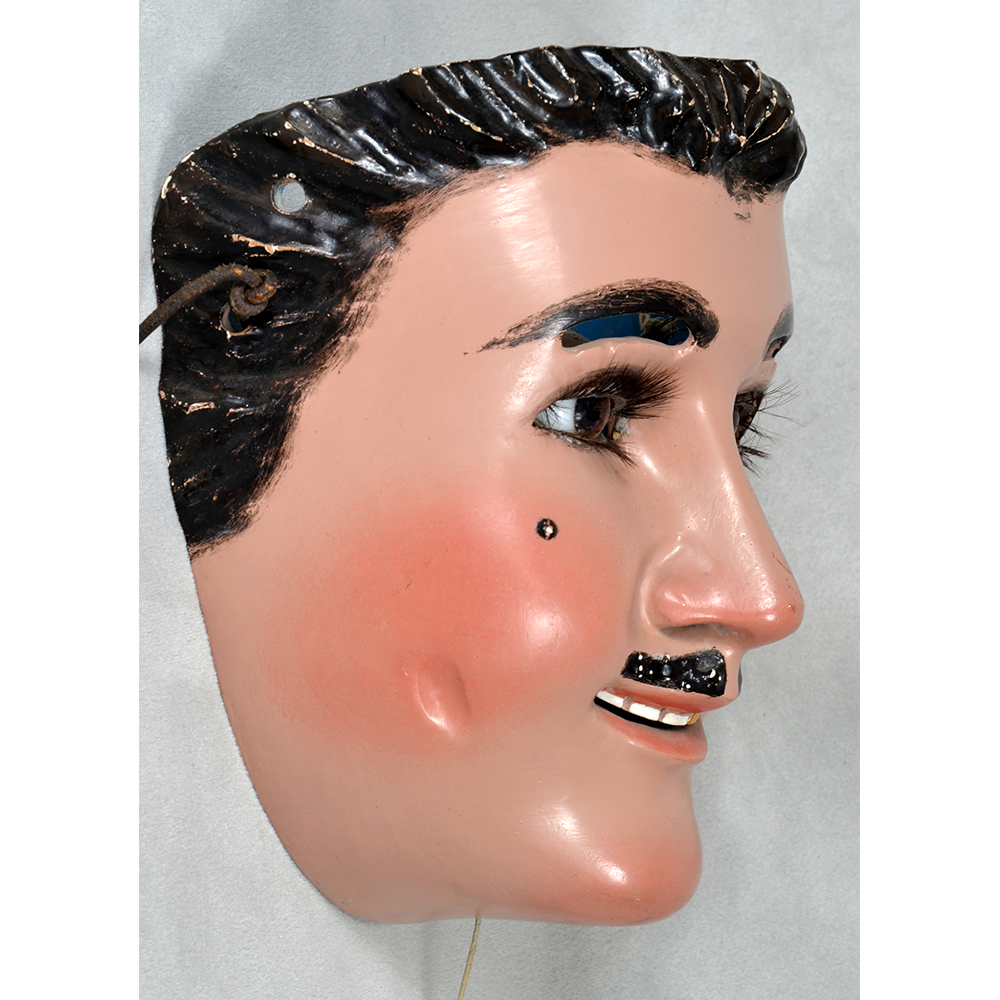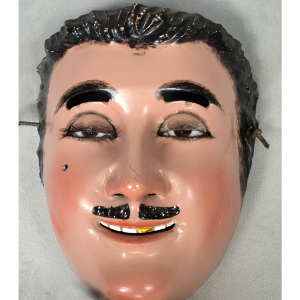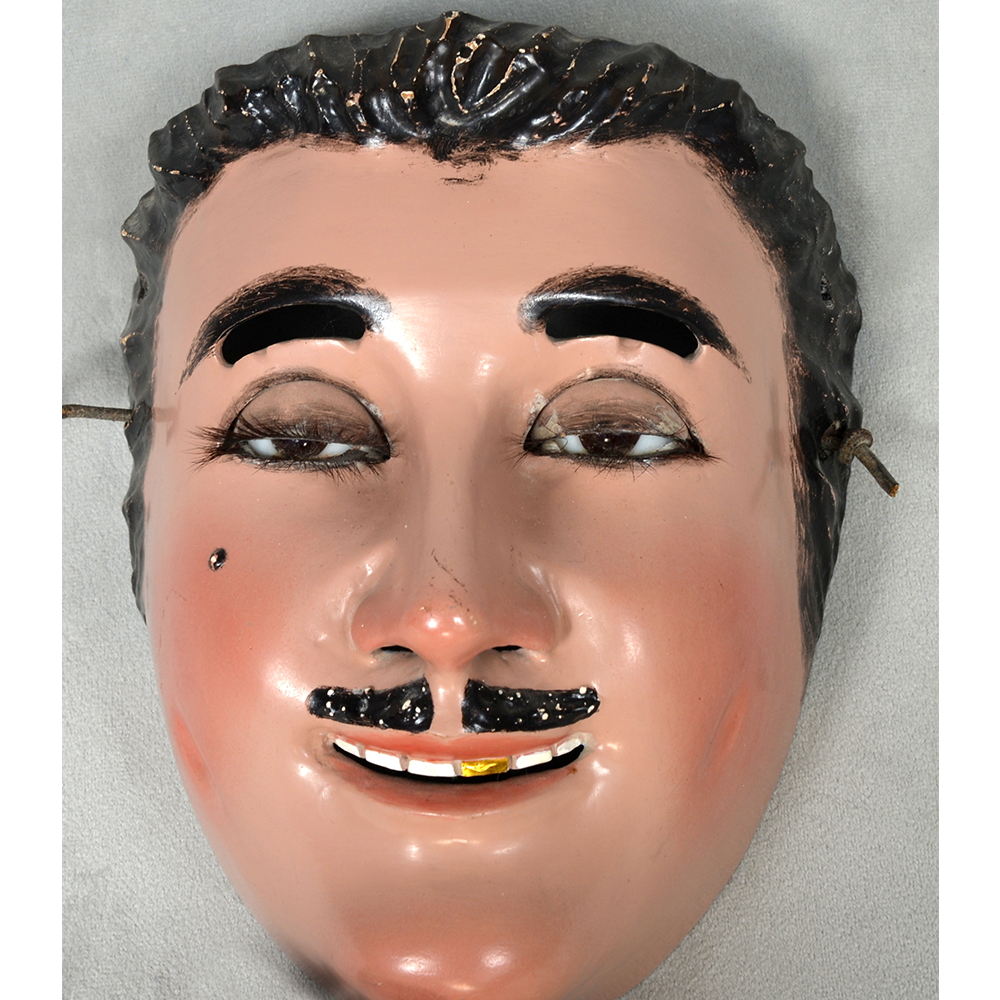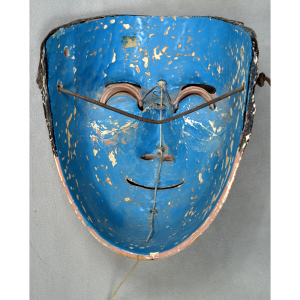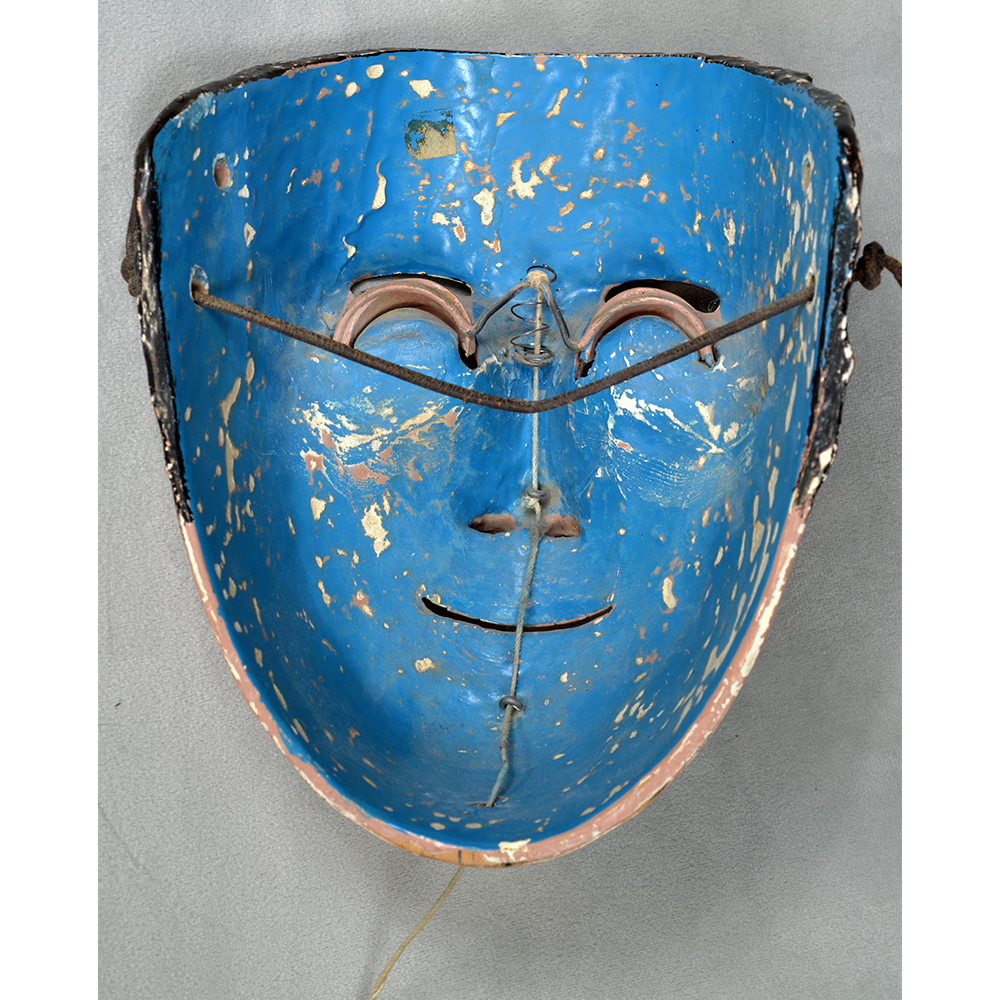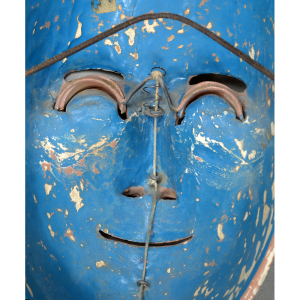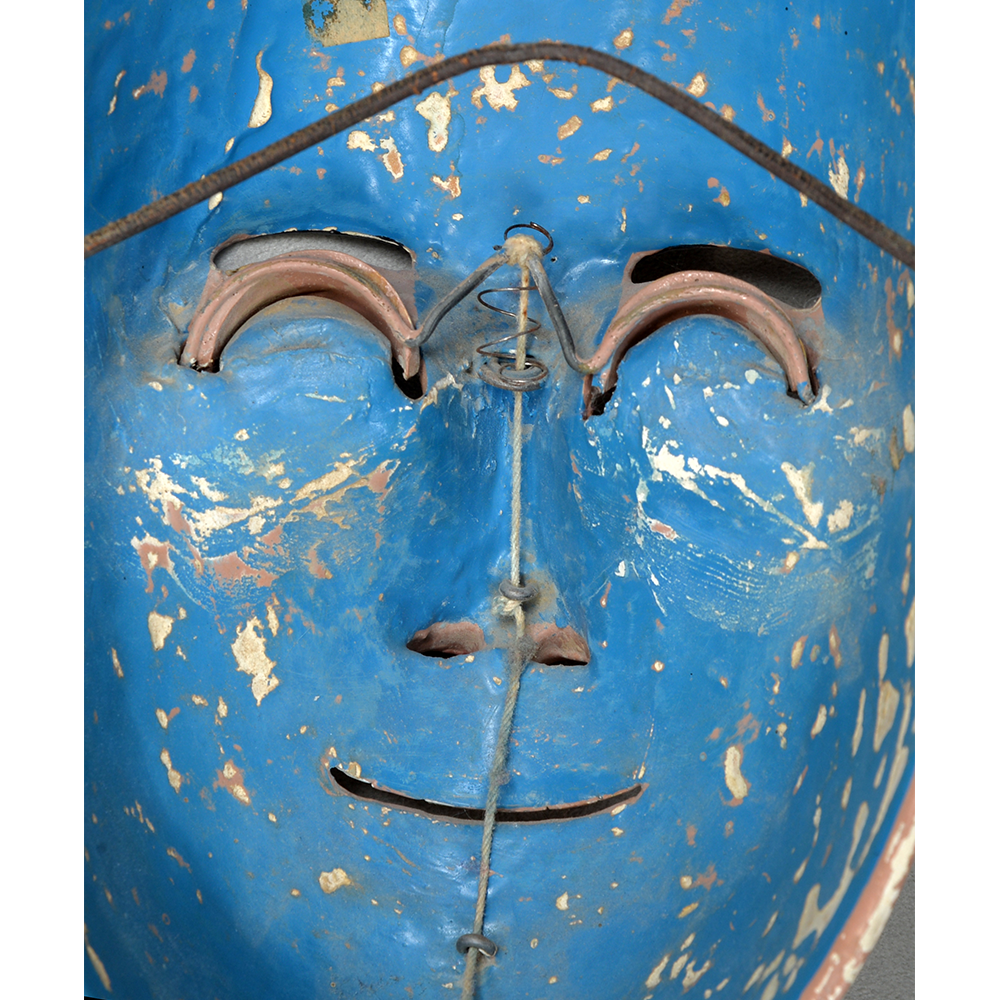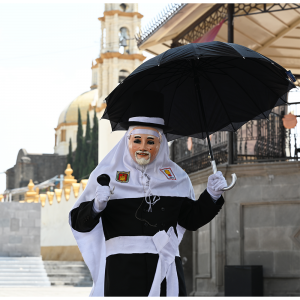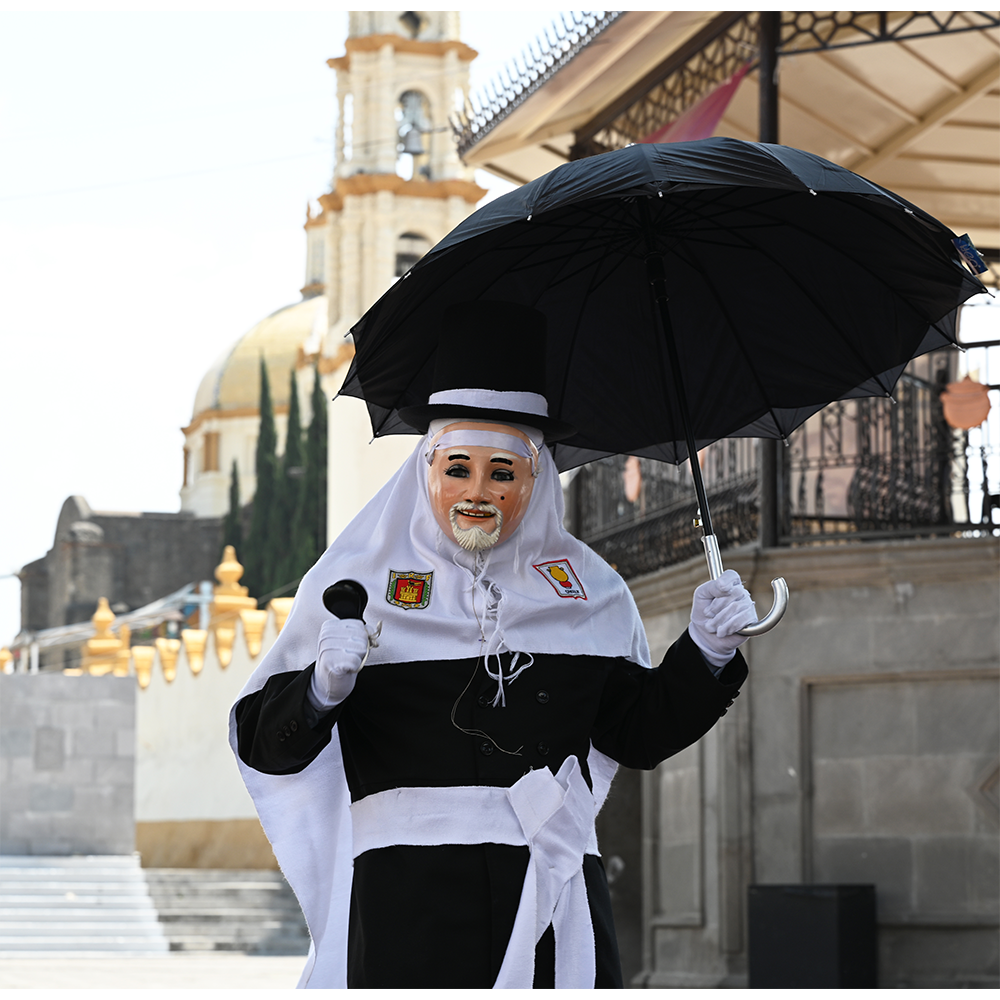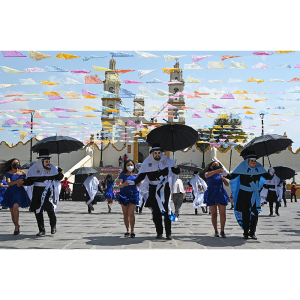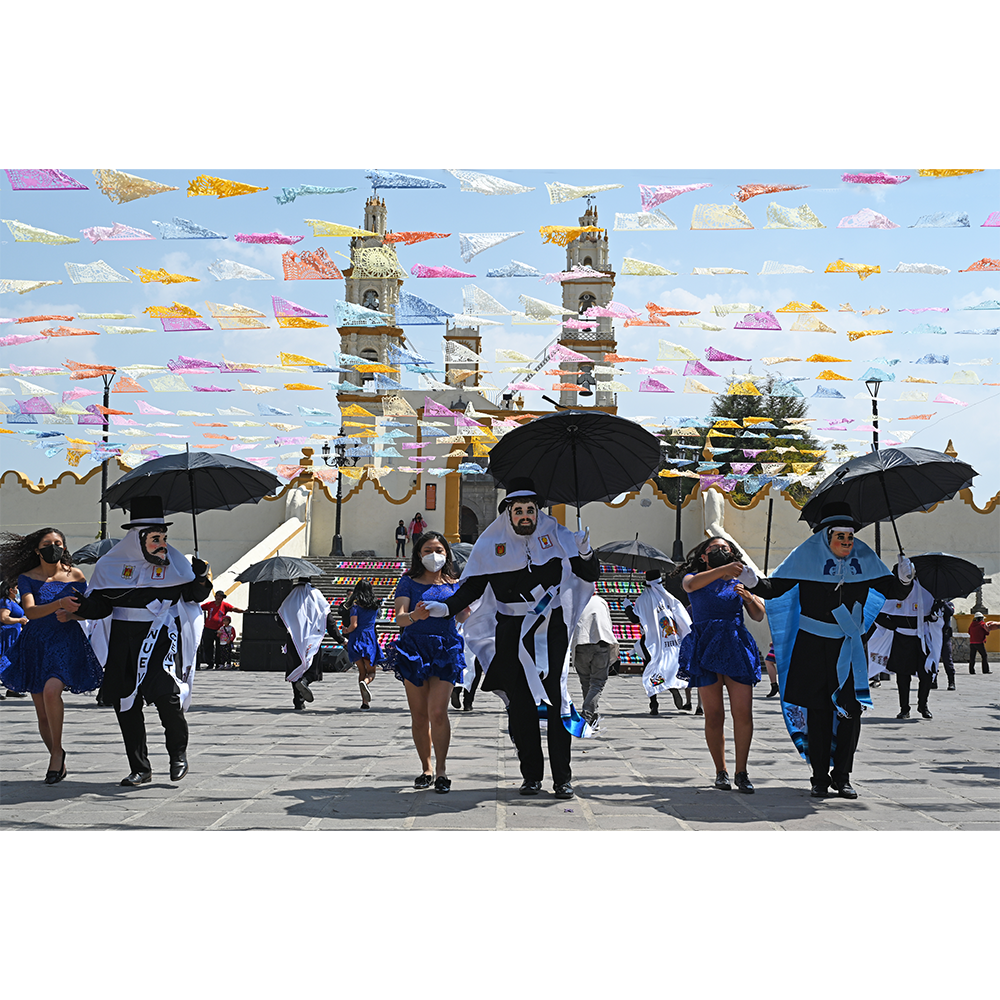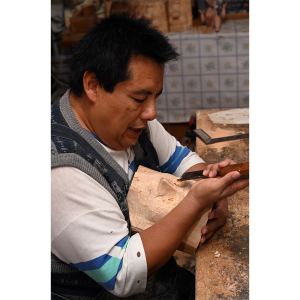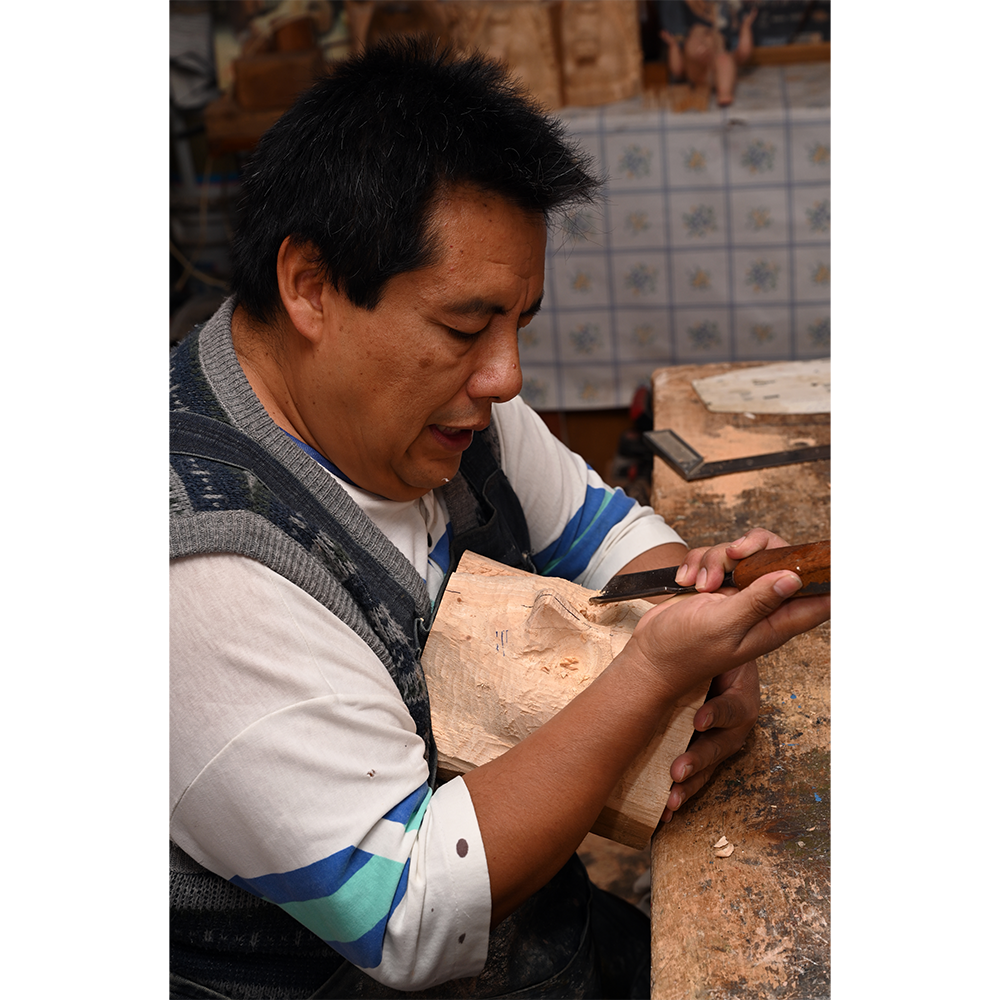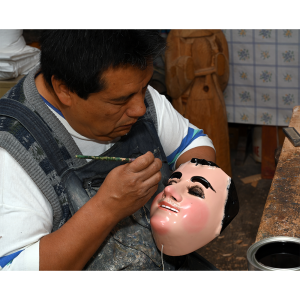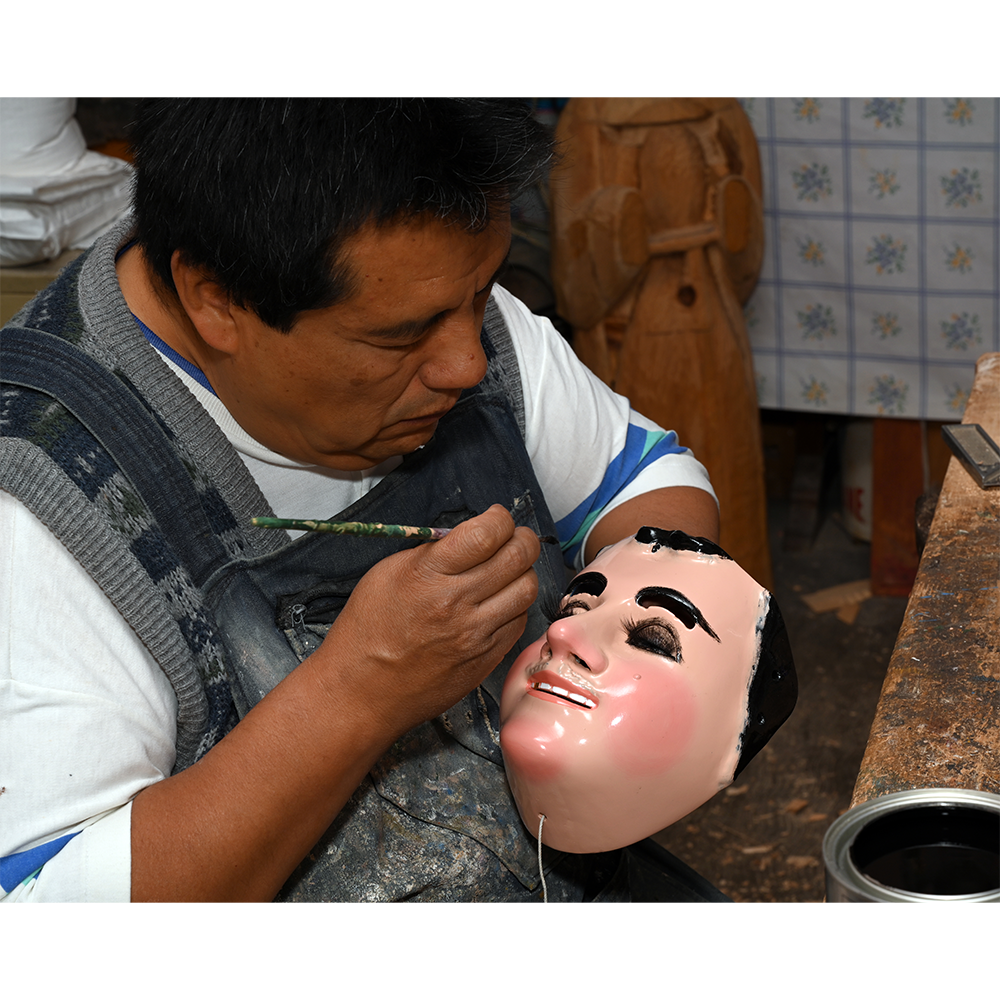TITLE: Catrín Mask
TYPE: face mask
GENERAL REGION: Latin America
COUNTRY: Mexico
SUBREGION: Tlaxcala
ETHNICITY: Nahua
DESCRIPTION: Catrín (dandy) mask
CATALOG ID: LAMX141
MAKER: Pedro Amador Reyes Juárez (Tlatempán, 1939-1999)
CEREMONY: Carnival
AGE: 1960s
MAIN MATERIAL: wood
OTHER MATERIALS: oil-based paint; glass eyes; cattle hair eyelashes; gold foil; metal hardware; cotton string; leather straps
Carnival in Tlaxcala, Mexico has traditions quite different from those in other parts of the country. In the city of Tlaxcala, men dress in formal suits, gloves, and top hats, with extremely realistic and handsome Spanish-type masks, and in some towns carry umbrellas through the streets as parasols. The catrín, or dandy, is a figure of ridicule dating back to colonization, when elaborately dressed Spaniards flaunted their wealth to the oppressed indigenous peoples. The catrín is the indigenous revenge, possible because the masks and costumes made it difficult to identify the culprits. Frequently the masks have gold teeth and beauty marks, like this one, and include an ingenious spring mechanism attached to a string, which allows the masquerader to blink the dandy’s eyes by pulling on the string. The masks of Tlaxcala are some of the only known mechnical masks in Latin America. Glass eyes were imported into Tlaxcala for mask-making around 1960.
In the past, the catrínes paired up with dancers known as nanas, who were male dancers dressed as elegant Spanish ladies and wearing a delicately-carved female mask.
Masks of this type are frequently delicately carved and hand-painted by master craftsmen in multiple layers.
A brief documentary about Carnival in the state of Tlaxcala, Mexico.
